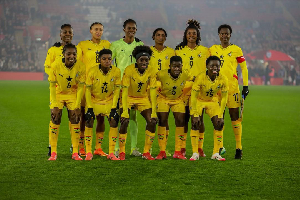Opinions of Friday, 21 February 2020
Columnist: Professor Newman Kwadwo, IFS
Ghana’s Rising Public Debt: Causes and Implications (2)
Impact of the Rising Public Debt
Unsustainability of the public debt. One major problem of Ghana’s rising public debt has to do with its sustainability, both currently and in the medium-term. In 2015 when Ghana signed up to a three-year IMF Extended Credit Facility program for an amount of $918 million, the Fund’s debt sustainability analysis classified the country as at ‘high risk of debt distress on account of the level of the public debt. Four years later, the country’s debt situation had not improved.
The World Bank and the IMF have maintained Ghana as a high risk of debt distress country after their latest debt sustainability analysis concluded that the country’s risks of external and overall debt distress continue to be high and the country’s public debt level has breached its sustainability threshold.
The Fund’s October 2019 debt sustainability analysis also found the country’s medium-term debt path to be high, reflecting lower GDP growth, a higher fiscal deficit (due largely to energy sector costs) and debt service over the medium term. Although there is marked improvement in the solvency ratios following the rebasing of the GDP, the debt service ratios continue to breach their respective benchmarks, reflecting the underlying vulnerabilities.
Currently, Ghana is classified as the only country in sub-Saharan Africa that is at risk of high debt distress, implying that the country is accumulating so much debt that it may not be able to repay.
The Bank of Ghana also declared that Ghana’s public debt stock is unsustainable and the large foreign investor component makes the economy vulnerable.
Interestingly, the Economic Commission for Africa (ECA) also reached the same conclusion as the IMF and World Bank when it listed Ghana among 11 countries in the sub-region that are at high risk of debt distress.
Ghana’s classification as a high debt distressed country implies that there is serious concern about the country’s ability to meet its debt obligations.
This concern comes at a time when the country’s total public debt stands at GH¢234.0 billion and the government has set aside over GH¢19 billion in the 2020 Budget to pay interests alone.
Interest payments have become one of the biggest government expenditure bill, and more than capital expenditure. The fear is that any further fiscal slippage will have adverse impact on the country’s debt dynamics, which will have serious implications for investors’ confidence in the economy.
In addition, Ghana still faces high financing costs in both domestic and external markets as interest rates on the international financial market remain susceptible to actions of the US Federal Reserves.
Rapid increase in debt servicing cost. A major impact of Ghana’s rising public debt has to do with the cost of servicing the debt (amortization and interest payment), which rose significantly in the 11-year period ending 2019, making Ghana one of the African countries with the highest debt services and posing a serious problem for fiscal management.
Total debt servicing increased from GH?1.1 billion (3.6% of GDP) in 2008 to GH?107.6 billion (31.1% of GDP) which was equal to the country’s total external debt during the period.
The bulk of the amortization, totaling GH?13.5 billion (53.6%) was made in 2017-2019 period.
Total interest payment on the government debt jumped from GH?6.5 billion in 2009-2012 to GH?36 billion in 2013-2016, and then to GH?39.9 billion in 2017-2019. Over the eleven year-period ending 2019, Ghana paid a total of GH?82.5 billion (76.7% of total debt servicing cost) as interest on public debt (Table 3).
Bank of Ghana, Summary of Economic and Financial Data (various issues)
Interest payment as a percentage of total tax revenue averaged 40.2% during the 2009-2019 period while total debt servicing cost averaged 42.3%. This means that since 2009, for every one cedi collected as tax revenue, 40.2 pesewas was used to pay interest on public debt.
Also for every one cedi collected as total revenue, 42.3 pesewas was used to service the public debt (Table 3). In fact, 2019 was the sixth successive year that total interest payments on public debt was bigger than total government capital expenditure, suggesting that interest payments will probably have to be financed through additions to public debt or at the expense of other key government expenditures if the government does not slow down the rate of borrowing.
The 2020 budget allocates over GH¢19bn to pay interests on government debt and is one of the biggest items on the government’s expenditure bill and more than the allocation for capital expenditure.
There is also the rising energy sector debts, which the government described in July 2019 as in a “state of emergency. Ghana’s public debt profile and associated servicing costs are expected to rise more so as the country heads into the crucial 2020 elections cycle with rising public demand for improvement in living conditions.
According to the Minister of Finance, the 2019 Budget set aside GH¢18.6 billion to pay for interest on borrowed funds. In the 2020 Budget, the Minister projected that interest payment will hit GH¢21.7 billion. This means that if the economy does not expand to accommodate the rising debt servicing costs, it could impact negatively on the debt-to-GDP ratio, which stood at 62.1% in 2019.
Risk of capital flight and currency depreciation. Another worrisome aspect of Ghana’s public debt is that a larger portion of it is held by foreigners, posing serious risks to the country’s balance of payments and external vulnerability. As at end-2018, foreign investors were holding 30% of the country’s domestic bonds and about 64.9% of the entire public debt was in the hands of foreign investors. By March 2019, this had worsened to 67.2%, making Ghana the highest external holding of public debt in Africa.
The increased reliance on foreign investors has come at a cost to the country as their presence has heightened exposure to shifting market sentiment and exchange rate risk. Ghana’s newly incurred public debt is also mainly in the form of non-concessional external foreign-currency debt. Against this background, there is the possibility of capital flight if non-resident holders of the country’s debt find other economies attractive for investment.
Also, with foreigners holding more of the local bonds, Ghana has become vulnerable to investors’ changes of confidence and also exposed to foreign exchange risks. The Ghanaian economy has thus become more vulnerable to foreign investor sentiments and should any panic situation causes capital flight, the non-resident holders will sell off their investments.
In addition to the risk of capital flight, Ghana is at constant risk of currency depreciation if non-residents keep holding a large portion of the domestic debt. Thus, a possible non-resident withdrawal from the Ghanaian domestic bond market, due to an appreciation of the US dollar, effects of the US tightened monetary policy or a rise in the Federal interest rates, creating a preference for investing in US assets, will run the risk of weakening the cedi exchange rate, with serious implications for the size of the external debt counted in Cedis.
Ghana will also have to face high financing costs on internal and external markets in the context of a strong USA dollar and the rise in global bond yields.
In fact, the ratio of Ghana’s short-term private capital inflows to net international reserves rose by more than 200% above the standard benchmark in 2019, suggesting that there is a real prospect of payment default, which could be triggered by any shock to external financing conditions. Already, there are significant capital flow reversals ongoing and foreign participation in domestic bonds has started declining.
Vulnerabilities in the ability to service debt. Ghana’s ballooning debt stock against persistent shortfalls in revenue mobilization have created vulnerabilities in the country’s ability to service its debt.
Revenue shortfalls continue to pose significant rigidity on the governments’ ability to fully fund and finance most capital projects that will boost economic growth and the wellbeing of Ghanaians. As a result, Ghana has to resort to borrowing to finance its capital projects.
Consequently, debt service expenditure has increased sharply since 2013 and by 2019, the ratio had reached 50.7%. This means that for the first time in nearly two decades, debt servicing expenditure absorbed over 40% of total government revenue.
Compounding the problem is the exposure to foreign exchange related valuation which also affected the country’s fiscal strength, posing a significant constraint to the country’s sovereign credit profile (Afolabi, 2019).
Collateralization of future revenues. Another serious concern about Ghana’s rising public debt is the collateralization of future revenues. Government is currently borrowing on account of future revenues.
The GETFund proceeds are going to drop significantly because a lot of it would have to finance the US$1.5 billion that the government is raising to support the Fund. Mineral royalties are also going to disappear because the money will be used to finance the US$750 million of royalty income for the next 10 to 15 years that has been mortgaged.
There is also the mortgaging of some minerals that are yet to be produced, such as the Sino-Hydro US$2 billion bauxite deal for which revenues that are supposed to come to the state have already been earmarked for infrastructure spending. This financing strategy, involving debt collateralization and revenue monetization, has the potential to encumber revenue over the medium term.
Conclusion
The rapid increase of Ghana’s debt together with the changes in its structure and design features make the debt unsustainable, pointing to another systemic sovereign debt crisis.
Moreover, external and foreign currency denominated debt has become predominant, exposing the country to swings in global market conditions. The share of commercial debt is also rising due mainly to the constant issuing of Eurobonds in recent years.
The imminence of another debt crisis in less than two decades after a major debt relief points to the fact that progress has not been sufficient to address the structural issues that constrain sustainable development financing in Ghana. The growing public debt is not supported by commensurate investment in capital expenditure.
The inability of the government to raise sufficient domestic revenue to finance its activities means the government’s large borrowing needs continue to crowd-out credit to the private sector, leaving the country exposed to investor sentiments.
The recent financial sector clean-up continues to create fiscal costs, while longstanding losses in the energy sector have spilled over to government financing needs. Still, there are some downside risks, including the 2020 election-related spending pressures and potential debt rollover difficulties, due possibly to loss of investor confidence or a tightening of global financial conditions.
Ghana’s debt management in 2020 and the medium term needs to remain flexible in the light of the uncertain global environment. Liability management operations should aim at smoothening the domestic redemption profile going towards the 2020 elections to limit refinancing risks and increasing buffers.
Transparent, regular, and consistent market communication, including improved coordination and visibility of debt issuance across state-owned entities, will also facilitate the management of a possible turbulence.
Professor Newman Kwadwo Kusi is the Executive Director of Institute for Fiscal Studies (IFS).














